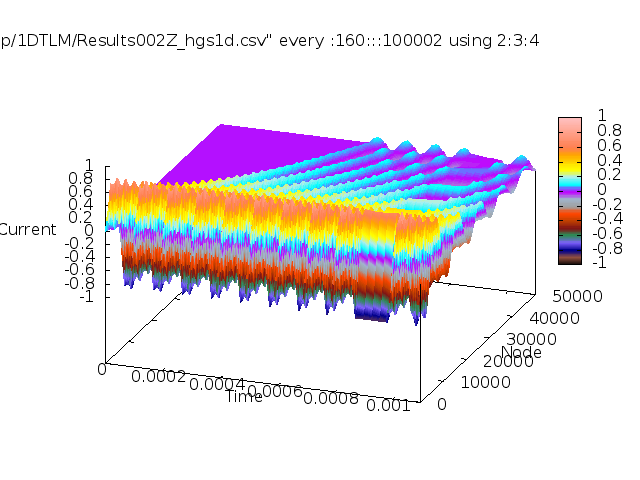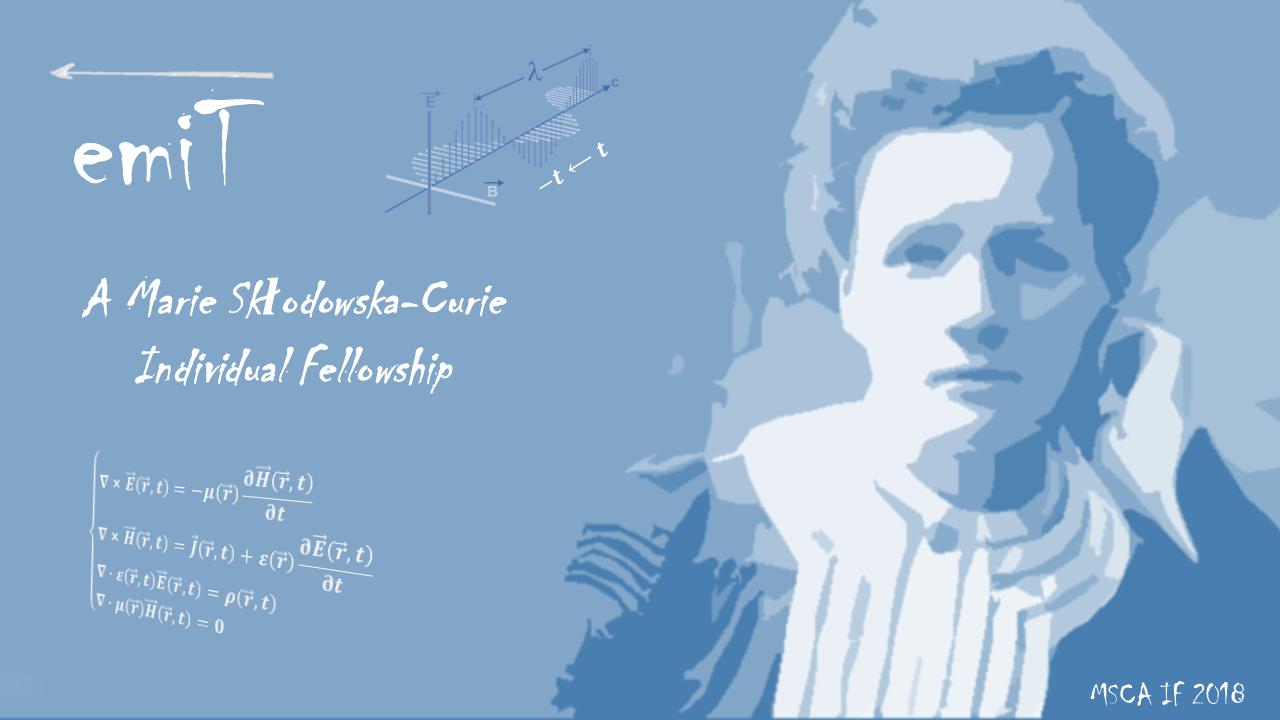PAPERS
Each publications is open access at the DORA repository website of the De Montfort University. The data produced during the project and used to validate results presented in the published papers are open access at the DMU Figshare repository of the De Montfort University.
[8] A. Ragusa, H. Sasse, A. Duffy – “Practical Evaluation of Electromagnetic Time Reversal to Locate Partial Discharges in the Presence of Noise”- submitted to IEEE Letters on EMC Practice and Applications on the 26th of Nov. 2021.
[7] A. Ragusa, P. A. A. F. Wouters, H. Sasse and A. Duffy – “The Effect of the Ring Mains Units for On-line Partial Discharge Location with Time Reversal in Medium Voltage Networks” – submitted to IEEE Access on the 16th of November 2021.
[6] A. Ragusa, H. Sasse, A. Duffy, “On-Line Partial Discharge Localization in Power Cables Based on Electromagnetic Time Reversal Theory – Numerical Validation”, IEEE Transactions on Power Delivery, 11 October 2021. Click here to find data used to validate the published results.
Abstract: This paper presents the numerical validation of a new on-line location method of partial discharge (PD) in cables of Medium Voltage (MV) power networks based on the electromagnetic time reversal (EMTR) theory. Because PD events are a symptom of cable insulation degradation, PDs localization is a key topic for fault prevention on power networks, increasing their reliability and resilience and to guaranteeing electricity security. A description of the proposed EMTR PD location method is given and its effectiveness and accuracy are analyzed in lines with both homogeneous and inhomogeneous power cables. The accuracy of PD location methods is strongly affected by the distortion of the PD pulses during their propagation on power lines, caused mainly by the skin effect. For this reason, the accuracy of the proposed location method is analyzed using a lossy model of power networks that is able to reproduce PD signals distortion. The model used, realized using the transmission line matrix (TLM) method, is also presented here and theoretically validated.
[5] A. Ragusa, H. Sasse, A. Duffy, F. Rachidi, M. Rubinstein – “Application to Real Power Networks of a Method to Locate Partial Discharges Based on Electromagnetic Time Reversal”, IEEE Transaction on Power Delivery, 24 September 2021.
Abstract: The paper presents an experimental validation of a method to locate partial discharges (PDs) on power distribution and transmission networks. The method is based on electromagnetic time reversal (EMTR) theory, and it uses a Transmission Line Matrix (TLM) model to describe the propagation of the PD signals in the reversed time. Since PDs are regarded as a symptom of insulation degradation, on-line PD location is considered an important approach to monitoring the integrity of a power distribution network, with the aim of detecting and preventing faults and improving network reliability. In this paper, the EMTR-based method is described and its effectiveness in PD localization using only one measurement point is demonstrated in three real 33 kV power lines. Its effectiveness is proved with and without an on-line electromagnetically noisy environment, and its accuracy is evaluated with respect to different signal-to-noise ratio (SNR) levels of the networks. The validation shows that the method is able to locate PDs with an error of 0.14% with respect to the total length of the line in the absence of noise, and with an error that is always lower than 0.5% for an SNR down to -7 dB.
[4] A. Ragusa, H. Sasse, A. Duffy, “Electromagnetic Time Reversal to Locate Partial Discharges in Power Networks with Inhomogeneous cables using the Transmission Line Matrix Method”- CIGRE Science and Engineering Journal, June 2021. Click here to find data used to validate the published results.
Abstract: This paper describes a method for the on-line location of partial discharges (PD) in power networks based on the electromagnetic time reversal (EMTR) theory. PDs are localized electrical discharges that partially bridge the insulation between conductors and that start in cable insulation defects. Since the insulation degradation is often caused by PD, PD is regarded as a symptom of insulation degradation and on-line PD location is considered the most suitable monitoring method of network integrity assessment to prevent faults and improve network resilience. The proposed method, reversing in time the measured PD signals, refocuses them to their source allowing the location of PD site. The method uses the Transmission Line Matrix modelling approach to solve the backward propagation equations. In this paper, the effectiveness of the EMTR-based method to locate PDs in inhomogeneous power lines, using only one measurement point at a line end, is investigated and proved in simulation.
[3] A. Ragusa, H. Sasse, A. Duffy, F. Rachidi, M. Rubinstein – “Electromagnetic Time Reversal Method to Locate Partial Discharges in Power Networks using 1D TLM modelling” – IEEE Letters on EMC Practice and Applications, Vol. 3, Issue 1, March 2021. Click here to find data used to validate the published results.
Abstract: This letter sets out to describe the first results of the design process that will lead to a new on-line partial discharge location method based on Electromagnetic Time Reversal theory and using the Transmission Line-Matrix method. A description of the basic steps of the method under design is given together with the modeling procedure used to describe time inverted signal propagation. Finally, the ability of the method to locate partial discharges on power cables both using two observation points and a single observation point is proved in simulation.
[2] A. Ragusa, H. Sasse, A. Duffy, “Towards Modeling Partial Discharge Phenomena and Propagation in Power Networks using the Transmission Line Matrix method”, Energies 2021, 14(3), 689; 29 Jan. 2021. Click here to find data used to validate the published results.
Abstract: Partial discharge (PD), where high field strengths on power cables cause charge build up and discharge within a dielectric at sites of imperfections or inhomogeneities, can lead to noise issues and potential failure of the dielectric. This paper presents the first stage of a research activity that aims to develop a transmission-line matrix (TLM)-based simulation “workbench” useful to investigate PD events in a transmission line. The proposed approach allows the predicting of the electromagnetic disturbances generated by the PD event, and the analysis of external field coupling, such as from intentional electromagnetic interference or lightning, which can add to the field stresses. The paper is focused on defining the right modeling method to simulate PD phenomena in a transmission line context. The best approach to integrate the PD model with the model of the transmission line, useful to describe the propagation of the conducted and radiated emissions produced by PD, is analyzed. A first workbench is proposed, and the first simulation results are described. The paper concludes with the topics of further research.
[1] A. Ragusa, H. Sasse, A. Duffy – “3D Model of Partial Discharge in Defects with Different Sizes and Positions inside Cables for Power Distribution and Transmission Networks”– IET science, measurement & technology, 11/2020, Volume 14, Issue 9. Click here to find data used to validate the published results.
Abstract: The knowledge of partial discharge (PD) phenomena inside electrical insulation of power cables is an important issue for assessing the insulation condition and its degradation state, obtaining information about the likelihood of failure. PDs cause signals to propagate along the cable, as noise phenomena, and contribute to the insulation degradation, culminating in a disruptive fault with the interruption of power supply. Therefore, PDs are considered the best ‘early warning’ indicators of insulation degradation and their modelling, with the development of on-line PDs location methods, are important topics to increase the networks’ electricity security. In this study, a three-dimensional (3D) model of PD events using the CST STUDIO® Dassault software is proposed. PDs inside air inclusions in epoxy-resin are analyzed with different shapes, positions and sizes of the defect. The electric-field distribution is evaluated with the conduction current inside the void and the apparent charges induced on the electrode. The effectiveness of the model is validated by comparing the simulation results with other published experimental results. Finally, a description of a 3D–1D hybrid model useful to describe the propagation of PD signals in power networks is given.

